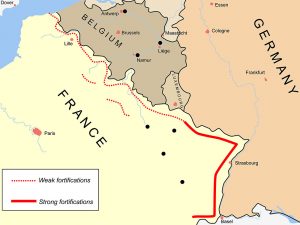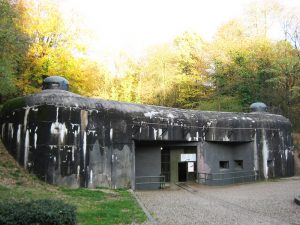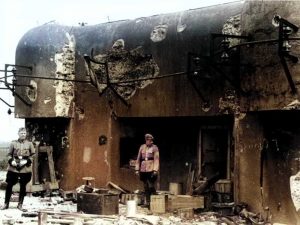Both France and Belgium developed fortification systems to reinforce their defenses during the interwar period, particularly at the German borders.
In France, the Maginot Line (built between 1928 and 1940) constituted a vast defensive network that ran from the English Channel to the Mediterranean. Along the border with Germany, the line was composed of an almost continuous set of concrete and armored fortifications, barbed wire, artillery, and machine-gun posts. In the event of a sudden attack, they were intended to slow down the enemy and give the army time to complete the mobilization of its troops.
In Belgium, the Minister of Defense, Albert Devèze, was responsible for constructing a network of concrete and armed shelters, starting in 1933. The aim was to secure the country’s eastern border in the provinces of Liège and Luxembourg.
At the same time, the Germans also built fortifications. The “Westwall,” also called the “Siegfried Line,” extended over 630 km from the Netherlands to Switzerland. It covered almost the entire western border of Germany.


